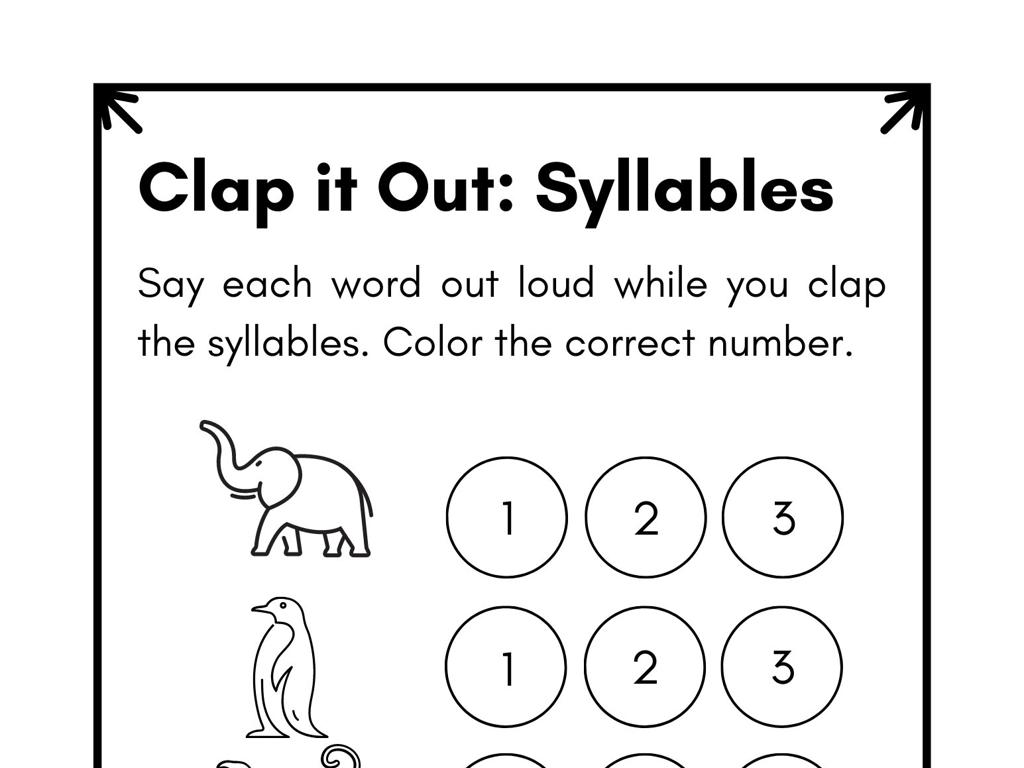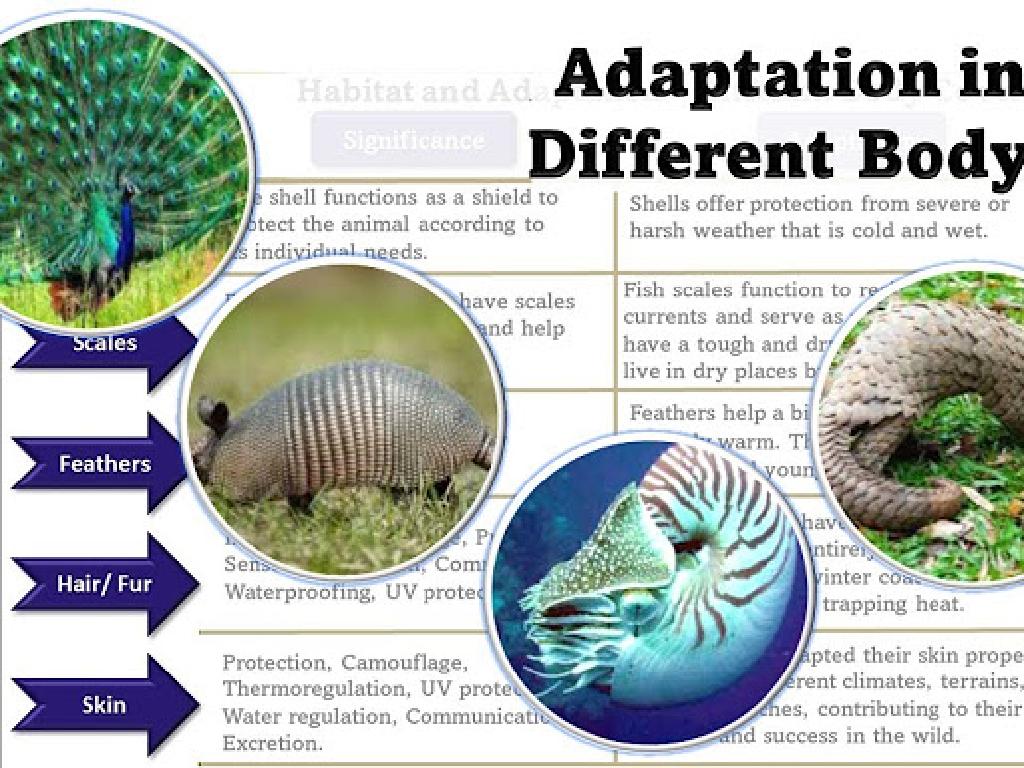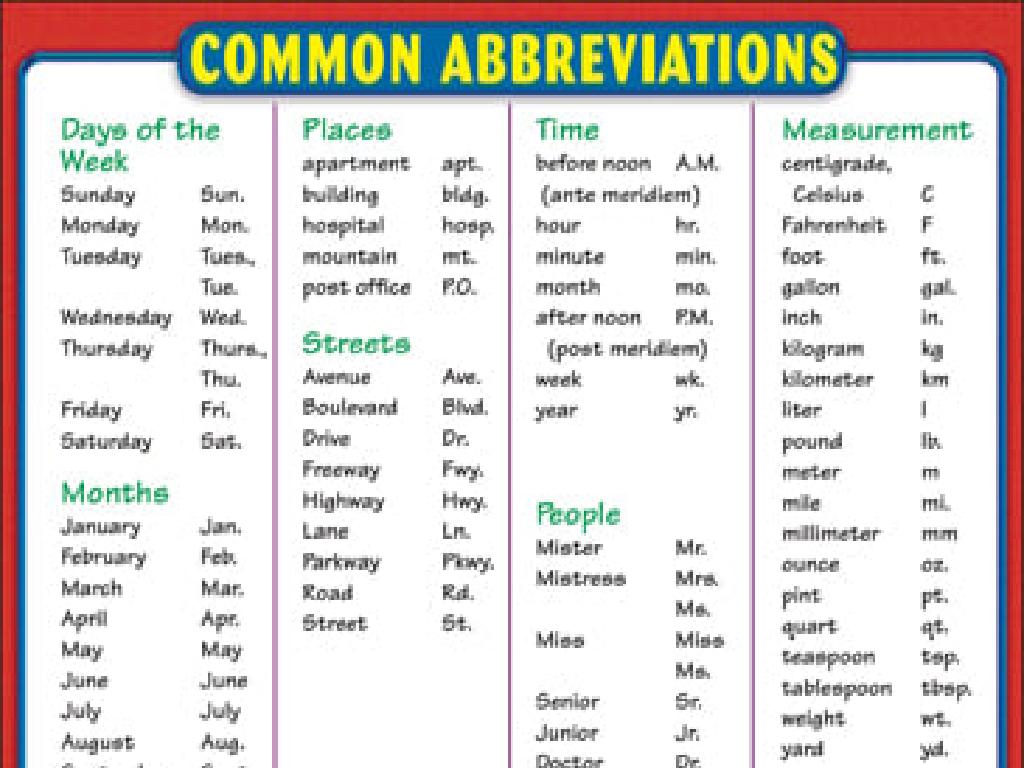Identify Parallel, Perpendicular, And Intersecting Lines
Subject: Math
Grade: Fourth grade
Topic: Lines And Angles
Please LOG IN to download the presentation. Access is available to registered users only.
View More Content
Lines and Angles: Types of Lines
– What are lines and angles?
– Lines are straight and have no curves. Angles are formed when two lines meet.
– Parallel lines explained
– Parallel lines are always the same distance apart and never meet.
– Perpendicular lines defined
– Perpendicular lines meet at a right angle (90 degrees).
– Intersecting lines
– Intersecting lines cross each other at any angle.
|
Begin the lesson by introducing the basic concepts of lines and angles, ensuring students understand that lines are straight and angles are created where lines meet. Explain that recognizing different types of lines is crucial in geometry and in understanding the world around us, as they form the basis of shapes and structures. Use real-world examples like railroad tracks for parallel lines, the edges of a book for perpendicular lines, and street crossings for intersecting lines. This will help students visualize and remember the concepts. Encourage students to ask questions and provide them with simple drawing exercises to identify and label parallel, perpendicular, and intersecting lines.
Exploring Lines in Geometry
– What is a line in geometry?
– A line is a straight path with no curves
– Lines extend infinitely
– Imagine a line that never ends, going on and on
– Lines are straight
– Lines have no thickness
|
Begin the lesson by explaining the concept of a line in the context of geometry. Emphasize that a line is a straight path that extends in both directions without end, which can be difficult to visualize since we can only draw finite lines. Highlight that lines are perfectly straight and do not curve or bend. Also, clarify that in mathematical terms, lines are considered to have no thickness, which means they are one-dimensional. Use a string or a laser pointer as a visual aid to demonstrate the concept of an infinite line. Encourage students to think about lines they see in everyday life and how those lines, while not infinite, help us understand the geometric concept.
Exploring Parallel Lines
– Parallel lines are equidistant
– Think of the two lines as friends walking side by side, always together but never touching.
– They extend without ever meeting
– Imagine two arrows flying in the same direction forever but never crossing paths.
– Railroad tracks as an example
– Just like railroad tracks stay the same distance apart to safely guide a train.
|
This slide introduces the concept of parallel lines to fourth-grade students. Emphasize that parallel lines are always the same distance apart, which means they are equidistant. They will never intersect or cross each other, no matter how far they are extended. Use the example of railroad tracks to help students visualize parallel lines in a real-world context. Explain that just like railroad tracks are designed to be parallel to keep the train moving smoothly on its path, parallel lines in geometry maintain the same consistent distance. Encourage students to look for and draw examples of parallel lines they see in the classroom or at home.
Perpendicular Lines
– Perpendicular lines intersect
– They meet at a 90-degree angle
– They form four right angles
– Each angle at the intersection is a right angle
– Example: Letter ‘T’
– The vertical and horizontal lines in ‘T’ show perpendicularity
– Perpendicular lines in shapes
– Find perpendicular lines in squares and rectangles
|
This slide introduces the concept of perpendicular lines to fourth-grade students. Perpendicular lines are explained as lines that intersect at a right angle, which is 90 degrees. Emphasize that wherever they meet, they create four right angles, a fundamental property that can be observed in various objects and shapes around us. Use everyday examples like the letter ‘T’ to illustrate perpendicular lines. Encourage students to identify and draw perpendicular lines, and to look for them in different shapes, such as squares and rectangles, to reinforce the concept. This will help students recognize perpendicular lines in geometry and in real-world objects.
Exploring Intersecting Lines
– Intersecting lines cross
– Two lines that meet at a point
– Angles can vary
– Not always perpendicular
– Example: Scissors
– Blades of scissors form intersecting lines
|
This slide introduces the concept of intersecting lines to fourth-grade students. Intersecting lines are defined as lines that cross each other at a single point. It’s important to clarify that while intersecting lines can be perpendicular, they do not have to be; they can cross at any angle. Use everyday objects as examples to help students visualize and understand the concept better. For instance, the blades of a pair of scissors are a practical example of intersecting lines. Encourage students to look around their environment for other examples of intersecting lines and share their observations in class.
Identifying Lines in Shapes
– Find parallel lines in rectangles
– Sides opposite to each other are parallel
– Spot perpendicular lines in squares
– Square corners are perpendicular lines
– See intersecting lines in triangles
– Triangles have angles where lines meet
– Discover lines in other polygons
|
This slide aims to help students recognize different types of lines in common shapes. When looking at rectangles, guide the students to understand that opposite sides are parallel to each other. In squares, not only are opposite sides parallel, but each corner forms a perpendicular angle. For triangles, students should identify the points where two lines meet, forming intersecting lines. Extend this knowledge to other polygons, encouraging students to find examples of parallel, perpendicular, and intersecting lines. Use real-life objects like books and picture frames to illustrate these concepts. Prepare to have students draw shapes and identify the lines for practice.
Lines in Our World: Parallel, Perpendicular, and Intersecting
– Spotting lines in everyday life
– Parallel lines in buildings
– Lines in floors and bricks that run side by side
– Perpendicular lines in books
– Edges of a book meeting at a perfect corner
– Intersecting lines in windows
– Panes in a window crossing each other
|
This slide aims to help students recognize and understand parallel, perpendicular, and intersecting lines by observing their surroundings. Encourage students to look for real-world examples where these types of lines appear. For instance, parallel lines can be found in the patterns of a building’s floors or the alignment of bricks. Perpendicular lines are seen where the edges of a book meet at a right angle. Intersecting lines can be observed in the design of window panes. By relating these concepts to tangible objects, students can better grasp the abstract mathematical concepts. Ask students to bring in photos or drawings of examples they find at home or in their community for the next class discussion.
Class Activity: Line Detectives
– Become a Line Detective
– Find & draw line examples
– Look for parallel, perpendicular, and intersecting lines around you
– Share findings with class
– Discuss line recognition use
– How can this knowledge be applied in real life?
|
In this engaging class activity, students will act as ‘Line Detectives’ to identify parallel, perpendicular, and intersecting lines in their surroundings. They will search for real-world examples, such as bookshelves (parallel), street crossings (intersecting), and the letter ‘T’ (perpendicular). After drawing these examples, students will present their findings to the class, fostering public speaking and observational skills. The discussion will focus on the practicality of recognizing these lines in everyday life, such as in architecture, art, and engineering. Possible activities include: 1) Line scavenger hunt in the classroom, 2) Drawing lines found on playground equipment, 3) Identifying lines in classroom objects, 4) Creating art with different types of lines, 5) Using string to demonstrate lines on a bulletin board.






